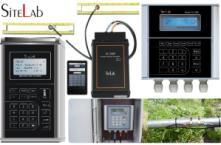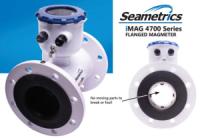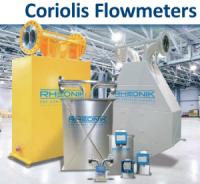Models and types of flow meter that populated the market is quite varied where types can be adjusted to flow meter’s functions and flow meter’s applications in the field. These matters are worth noticing to be used as our reference when choosing types of flow meter that suits our needs.

In this case, Doppler flow meter has Doppler shift which measures using continuous-wave in constant frequency or variations such as changes happening inside the Doppler shift is measured using vibrations.
In Ultrasonic flowmeter, transmission from a wave that passes the sensor indirectly connected with fluids is called non-contact type. There can also be misconceptions or simplification on transit time flowmeter.
Some information classified the new type as “phase shift” and compared to the older type which in starting meter uses “transit time“ and other use “Correlation transit time“.
Now a combination of the two transits is now made with ultrasound technology, this makes it possible to know exactly how many functions and calculations of the actual technique.
Ultrasonic Flowmeter type is this is quite popular especially for those who want the type of flow meter that can be moved around or in other words it is portable and it is also referred to as a Hand-held flow meter.
Its operations method is quite simple, just clamp it on to the pipe in which flow is going to be measured. For the output of the flow meter, while it can only be read on the display, there are also those equipped with printers so that the measurement results can be directly stored as hard copy, and there are also measurement results that can be stored on the memory card in the form of soft copies that can be read directly by the computer using a card reader.
 Magnetic flow meters,
in its method, are using Faraday law of electromagnetic induction.
Based on this principle, when a conductive medium passed a magnetic
field, voltage is generated. This voltage is s
directly proportional to the conductive medium speed, magnetic field
density, and conductor length. In Faraday’s Law, the three values are
multiplied together, together with a constant, to produce the amount of
voltage. therefore the liquid measured by an electromagnetic flowmeter
must be conductive.
Magnetic flow meters,
in its method, are using Faraday law of electromagnetic induction.
Based on this principle, when a conductive medium passed a magnetic
field, voltage is generated. This voltage is s
directly proportional to the conductive medium speed, magnetic field
density, and conductor length. In Faraday’s Law, the three values are
multiplied together, together with a constant, to produce the amount of
voltage. therefore the liquid measured by an electromagnetic flowmeter
must be conductive.
Engineers need to know the model and
type of flow meter that is going to be used, with first choosing what
model compatible with the production process and the purpose of
installation of the flow meter. The model and type of flow meter usually
also chose based on the purpose and benefits of the flow meter itself.
The selection of the type and type of flow meter is usually adjusted by
the type of fluids measured, the environmental conditions, the amount of
flow, and the most important is the accuracy of the flow meter
readings.
Depends on the flow meter methods, can be divided into some type of flow meter:
1. Ultrasonic Flow Meter
Ultrasonic flow meter is a
measurement tool with method of indirect measurement (inferential),
because sensor does not measure the speed of the fluid in the pipe
directly, instead, it measures different in time of transit
(differential transit time), by measuring time of transit of the sound
pulse with high-frequency (high-frequency sound pulses) which travels in
the pipe with fluid flow. Time of transit or transit time is the time
needed by the sound pulse to travels along the pipe in two directions,
in the same direction as the flow and the opposite direction. The
difference in time between the two equals the average speed of the fluid
flow. Because of its measurement based on transit time, this method
also called ultrasonic transit time flow meter.

Ultrasonic can be defined as many things. Since Portable Ultrasonic flow meter became popular, technicians think that flowmeter is a Portable Ultrasonic flowmeter.
However, the ultrasonic flowmeter is a tool that is needed to measure
flow velocity, volume, mass flow from liquids or gases with
characteristics which can be moved around.
There are numerous companies that tried to develop this technology to
be applied on steam, but so far the application of this tool is still
uncommon and very limited. Ultrasonic flow meter
so far has been made in various types and applications ranging from
transit time or Doppler as base flow or liquid flow, low anemometer to
describe the high cost of natural gas as a housing transfer application.
The price for an ultrasonic flow meter can range from USD 25 to USD 150,000 depending on the application, and there are also handheld ultrasonic flow meters.
Principle of Operation
Basically people will distinguish one technology from two types of measurement techniques but this is not entirely true. An Ultrasonic flowmeter
will be categorized into Doppler type (which is used to shift the
Doppler principle). Or time transfer equipment in the form of measuring
time difference. This difference may have brought a fairly simple reason
to easily classify ultrasonic in the industry. If someone learns ultrasonic flowmeter measurement techniques, they will find several technologies that might be wrongly classified.
 |
 |
In this case, Doppler flow meter has Doppler shift which measures using continuous-wave in constant frequency or variations such as changes happening inside the Doppler shift is measured using vibrations.
In Ultrasonic flowmeter, transmission from a wave that passes the sensor indirectly connected with fluids is called non-contact type. There can also be misconceptions or simplification on transit time flowmeter.
Some information classified the new type as “phase shift” and compared to the older type which in starting meter uses “transit time“ and other use “Correlation transit time“.
Now a combination of the two transits is now made with ultrasound technology, this makes it possible to know exactly how many functions and calculations of the actual technique.
Ultrasonic Flowmeter type is this is quite popular especially for those who want the type of flow meter that can be moved around or in other words it is portable and it is also referred to as a Hand-held flow meter.
Its operations method is quite simple, just clamp it on to the pipe in which flow is going to be measured. For the output of the flow meter, while it can only be read on the display, there are also those equipped with printers so that the measurement results can be directly stored as hard copy, and there are also measurement results that can be stored on the memory card in the form of soft copies that can be read directly by the computer using a card reader.
2. Glass Tube Flow Meter
Glass tube flowmeter
type widely used for installment applications with a vertical system
and the amount of flow rate can be read directly and immediately. The
tube is usually made from excellent glass material, the pyrex glass. The Glass tube flowmeter
type often used when pipe does not have a horizontal area because this
type of flow meter does not need a large area for its installation.
For its application, the Glass tube flowmeter can only stand maximum temperature at 120 C. And for this type, maximum pressure is not very high only around 10 bar. This Glass tube flowmeter
type only available for liquid and gas types of fluids. If flow meter
with higher working pressure is needed, around 60 bar, metal tube flow meter can be used.
3. Thermal Mass Flow Meters
4. Coriolis Mass Flow Meter
Coriolis mass flow meter is a flow meter that directly
measures the mass of fluids both liquid and gas. Sehingga Mass flow
meter Coriolis cannot be affected by changes in temperature, pressure,
viscosity, or even density. The basic method of Coriolis flowmeter is
there is Coriolis force produced because the flow traveling inside the
oscillating tube generates vibrations.
Force produced by the vibrations will be caught by a sensor which then will configure through Coriolis transmitter and produced linear flow. Coriolis flowmeter is highly accurate up to 0.1% and capable to operate in both high temperatures and pressure.
Coriolis mass flow meter in its application, will not be affected by changes in temperature because of the characteristic of Coriolis flowmeter the measures mass, so bubbles or air trapped inside the flow will not affect the measurement, because liquid mass measurement will ignore air.
Force produced by the vibrations will be caught by a sensor which then will configure through Coriolis transmitter and produced linear flow. Coriolis flowmeter is highly accurate up to 0.1% and capable to operate in both high temperatures and pressure.
Coriolis mass flow meter in its application, will not be affected by changes in temperature because of the characteristic of Coriolis flowmeter the measures mass, so bubbles or air trapped inside the flow will not affect the measurement, because liquid mass measurement will ignore air.
5. Positive Displacement PD Meter
6. Turbine Flow Meter
Turbine Flowmeter basically uses the same principle as Woltmann rotating vane meter, where vane or turbine or impeller is placed inside the Flowmeter. This vane will rotate when fluid flows into the flow meter and make it very accurate when used to measure fluid with the slow flow but with really high pressure.
7. Electromagnetic Flowmeter
 Magnetic flow meters,
in its method, are using Faraday law of electromagnetic induction.
Based on this principle, when a conductive medium passed a magnetic
field, voltage is generated. This voltage is s
directly proportional to the conductive medium speed, magnetic field
density, and conductor length. In Faraday’s Law, the three values are
multiplied together, together with a constant, to produce the amount of
voltage. therefore the liquid measured by an electromagnetic flowmeter
must be conductive.
Magnetic flow meters,
in its method, are using Faraday law of electromagnetic induction.
Based on this principle, when a conductive medium passed a magnetic
field, voltage is generated. This voltage is s
directly proportional to the conductive medium speed, magnetic field
density, and conductor length. In Faraday’s Law, the three values are
multiplied together, together with a constant, to produce the amount of
voltage. therefore the liquid measured by an electromagnetic flowmeter
must be conductive.
Electromagnetic Flowmeter is a type of flow meter that
is mostly used out of all types of flowmeter. It is used to measure
fluid flow in the form of water or other liquids both corrosive, dirty
and mudflow. Because of its considerable usage, most of the flow meter
manufacturers have electromagnetic flowmeter types.
Electromagnetic Flowmeter is most widely used in water and waste and chemical flow measurement applications. Most of the applications of Electromagnetic flow meter are
for industries such as the food, beverage, pharmaceutical, hospitality,
and waste processing industries because they have to use a flowmeter
that meets certain sanitation requirements.
8. Orifice Flow Meter
This type of flow meter, on its method, uses pressure differences and can be used on both high temperature or high pressure.
Orifice flowmeter aside from being used to measure liquid flow and gas; can also be used for steam flow Flowmeter
is available in various materials, from UPVC, PE, and PP or PTFE which
really suitable to be applied on chemical with corrosive characteristic.
There is an Orifice flowmeter type that is used for heavy/thick material, such as sludge, in the WWT process or when measuring gas with high humidity.
9. Laminar Mass Flowmeter
11.Vortex Flow Meters
More info and price please contact marketing@wmablog.com











